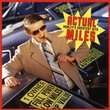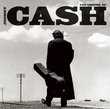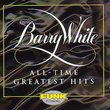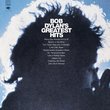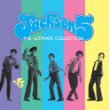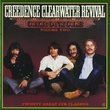| All Artists: Diana Ross & the Supremes Title: The #1's (Eco-Friendly Packaging) Members Wishing: 0 Total Copies: 0 Label: Utv Records Original Release Date: 1/1/2004 Re-Release Date: 2/3/2004 Album Type: Original recording remastered Genres: Dance & Electronic, Pop, R&B, Rock Styles: Disco, Oldies, By Decade, 1970s, Classic R&B, Motown, Soul, Quiet Storm Number of Discs: 1 SwapaCD Credits: 1 UPCs: 602498610022, 0602498610022, 602498180198 |
Search - Diana Ross & the Supremes :: The #1's (Eco-Friendly Packaging)
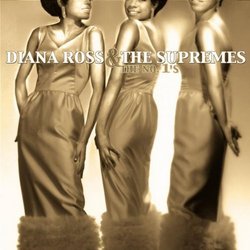 | Diana Ross & the Supremes The #1's (Eco-Friendly Packaging) Genres: Dance & Electronic, Pop, R&B, Rock
The Number 1's series is a brand-new line of CDs featuring #1 radio hits from the biggest names in music. This collection includes decade compilations as well as individual artist CDs and is being released by Universal ... more » |
Larger Image |
CD DetailsSynopsis
Album Description The Number 1's series is a brand-new line of CDs featuring #1 radio hits from the biggest names in music. This collection includes decade compilations as well as individual artist CDs and is being released by Universal Music Enterprises (UMe) in its ground-breaking, environmentally-friendly packaging format. A first for the music industry, the standard package (both sleeve and tray) will be completely paper-recyclable, continuing the company's long-standing commitment to being "green." To further reduce the amount of paper in the Eco-Pack, the CD booklet will no longer be offered.UMe is the first North American music company to replace the traditional jewel case with recycled paperboard sleeves and the plastic tray with trays made from PaperFoam®, a new packaging technology from Shorewood Packaging, a business of International Paper, that is paper-recyclable and biodegradable. Shorewood Packaging is the first North American packaging supplier to produce disc trays from PaperFoam®. Similarly Requested CDs
|
Member CD ReviewsReviewed on 5/6/2012... We've all listened to these gals over the years and loved them! This set has so much to enjoy and each song is a classic in its own right! Just great music to sit back and appreciate again and again! Reviewed on 2/3/2010... . 0 of 1 member(s) found this review helpful.
CD ReviewsNEW AND OLD, YET STILL A CLASSIC Heather | New York, NY | 02/14/2004 (5 out of 5 stars) "This collection is fabulous, and here's why: 1. This collection is strictly the number ones (Pop, R&B, AC and Dance). If you want just one collection in a neat package, this is it. 2. The songs are newly mixed for clarity and many songs have extended fades. The songs actually sound better than any other collection out there, and not slightly, the differences are truly amazing. One cannot hear the difference on a streaming download, the proof is in the purchase.3. For those purists who want original mixes, or perhaps more hits than exist here, there are MANY Supremes collections currently available: The Ultimate Collection (Mono masters), Anthology (Stereo masters on 2 CD sets for DR&S, 70s Supremes and Diana solo), a box set, and countless others.4. Some people are giving this CD less than 5 stars because they want the original albums (there are over 30). I don't think this CD deserves to be penalized this way. Besides, Motown's new Hip-O select line will surely re-introduce several of these albums in the near future, I look forward to it.Bottom line: Buy this CD, it's well worth every penny...and what a great price!" All The No.1 Hits! Ian Phillips | Bolton, Lancashire, UK | 09/28/2006 (5 out of 5 stars) "Diana Ross and the Supremes broke down many racial barriers during their eventful reign in the 1960's. Rivalled by only Elvis Presley and The Beatles, their remarkable acheivements included 12 ground-breaking chart-toppers. Motown boss, Berry Gordy, intended to use his roster of artists to appeal too not only blacks but to
break into white culture too. Diana Ross And The Supremes were easily the most successful act at Motown to find acceptance in white culture whilst also shrewdly retaining their wide black base also. There are popular misconceptions about The Supremes, that Diana Ross stepped all over Mary Wilson and the groups founder, Florence Ballard in a ruthless bid to be the sole star of the group. Mary Wilson had a breathy, seamless, pleasant-sounding soprano whilst Florence Ballards startling vocal delivery was more raw and earthy and indeed possessed a higher volume level than Diana Ross. But with Diana Ross, they immediately had a unique sound that set them instantly apart from other Motown acts. Her soft, soulful voice which was crystal-clear and neatly surfboarded along Motowns complex musical arrangements, conveyed raw elements of vulnreability and naievity that proved immensley popular to the sound of young America. She had a regal presence and was in a class and style of her own and this evidently is what Berry Gordy spotted in her when he signed her to Detroit's Tamla Motown Records in January 1961. As the civil rights wars continued across America, the sound of Motown offered seemingly light at the end of the tunnel with their racial-crossing music. The No.1 Hits collects all of Diana Ross and the Supremes biggest hits - including some delightful offerings from Diana Ross's successful solo recording career and 1 memroable track of the post-Ross Supremes....... 1. WHERE DID OUR LOVE GO The follow-up to The Supremes first real chart breakthrough When The Lovelight Starts Shining Through His Eyes (which charted at 23 on the U.S Billboard Hot 100) was the frantically paced Run, Run, Run. Whilst being a nifty affair with instant immediacy, Run, Run, Run anchored at No.93 on the U.S Hot 100, a full seventy places lower than When The Lovelight. Holland-Dozier-Holland then offered the now distraught Supremes, Where Did Our Love Go. Where Did Our Love Go had already been rejected by Mary Wells (most famous for one of the defining Motown classics, My Guy) and Motown's premier female group, The Marvelettes (who helped put Motown on the map by delivering the labels first ever chart-topper with the classic, Please Mr Postman). Lead vocalist of The Marvelettes, Gladys Horton, labelled Where Did Our Love Go "junk". Diana, Florence and especially Mary absolutely hated the song, finding it too mundane in its simplicity and considered it too be not soulful enough. They never believed for one second that Where Did Our Love Go would become a hit. Even Motown boss Berry Gordy predicted it would just be a reasonably sized hit and go Top 20 if they were lucky. H-D-H were optimistic though and The Supremes were low on the totem pole at that point so they were in no position to pick and choose what they recorded. Eddie Holland was adament he wanted Mary Wilson to head up front and take lead vocal duties on Where Did Our Love Go. The sultry, repetetive musical arrangements required a dry, salty voice which Eddie Holland believed was much more suited to Mary Wilson's voice than the upbeat, energetic sound of Diana Ross. It was then decided to be put to the vote. Eddie Holland firmly stuck to his guns and voted in favour of Mary Wilson. Lamont Dozier and Brian Holland voted in favour of Diana Ross. This proved to be a historic turning point as the entire history and fate of The Supremes could have been a completely different story had Mary Wilson taken the spotlight on Where Did Our Love Go. The Supremes destiny had now been cemented and Diana Ross was now ranked as the groups permanent lead singer, much to the dismay of Florence Ballard (who held rocketing vocal abilities of her own although to be fair it did lack the distinct and unique, sensual sound of the charismatic Diana Ross) and Mary Wilson. In order to get that desired vocal performance out of Diana Ross, H-D-H dropped her key, dictating that she sing the song in a lower throat register. Diana simply oozed sensuality on Where Did Our Love Go, sounding sexy yet angelic. Florence Ballard and Mary Wilson provided the obligatory but effective backing vocls. The sweet and tight harmonies of Diana Ross, Florence Ballard and Mary Wilson made for a magical combination. Where Did Our Love Go caught on to the public like a magnet, racing its way into pole position on the charts. This was mereley the beginning of Supremes mania and the first in a sequence of five consecutive chart toppers on both the Pop and R&B Charts. The Supremes had been travelling across the U.S.A on the Dick Clark Caravan Of Stars appearing alongside such notable chart acts of the day like The Shirelles, Gene Pitney and The Crystals. When The Supremes first started out on the Dick Clark Caravan Of Stars they were simply billed as "and others" but after the staggering chart-topping success of Where Did Our Love Go they were the HEADLINE attraction! Where Did our Love Go also paved the way for a successful chart run in Britain where it bounced up to No.3 on the U.K Singles Charts - LADIES AND GENTLEMAN: THE SUPREMES HAD ARRIVED! 2. BABY LOVE Baby Love was amazingly even BIGGER where it topped the charts on both sides of the Atlantic! Supremes mania was spreading across the globe like wild fire! Not bad for a group that only a year before had been referred to as the "no-hit" Supremes. By now everyone had their personal favourite Supreme but everyone knew who the skinny one in the middle was! Diana Ross instantly boasted a magnetic stage presence and was already being singled out by the media. Baby Love was three minutes of pure, utter perfection and vastly continued in a similar style and sound to Where Did Our Love Go. Diana sparkles vocally with her exuberant delivery that's so touchingly sweet it's virtually impossible to fault. Florence and Mary add to the dazzling effects on Baby Love by their warm backing harmonies. 3. COME SEE ABOUT ME Come See About Me swiftly followed hot on the trail of Baby Love's ground-breaking success and catapulted up to the top of the charts. This was a distinctley more sassy offering (and my own personal favourite of their trio of chart-toppers of 1964)where Diana delivers a more fiery lead performance. The dynamic and soulful backing harmonies of Florence and Mary reaches full effect when each verse steadily builds to the chrous. The Supremes sound was slightly more group oriented at this point and didn't fully revolve around the distinctive and crisp vocal style of Diana Ross. On 27 December, 1964, The Supremes became the first all-black act to appear on the top-rated variety television show, The Ed Sullivan Show to perform Come See About Me which was floating at the top of the charts that week. You really had to be somebody to be on The Ed Sullivan Show. Diana Ross rather laughably batted her eyes in a flirtatious manner and pulled funny faces at various points during her performance of Come See About Me. Even so, Diana clearly was a dynamic performer with a hypnotic presence. The Supremes became regular guest on The Ed Sullivan Show where it provided a useful tool to showcase their latest release. At this stage, The Supremes enrolled at Motowns very own Artist Development class, run by Maxine Powell. It was a sort of charm school where groups like The Supremes were taught how to refine their act, how to groom themselves correctly, how to conduct themselves at press conferences, how to walk in a gracious, lady-like manner etc. Diana Ross took to this like a duck to water! 4. STOP! IN THE NAME OF LOVE At the dawn of 1965, The Supremes enjoyed their fourth consecutive chart-topper with that familiar classic, Stop! In The Name Of love - another one of their many key landmarks and now something of a karoke essential! Stop! In The Name Of Love was more dramatic than their previous three chart-toppers and the divine Diana Ross was clearly progressing tremendously on a highly adept vocalist whilst evidently developing a unique style and sound of her own. Diana's soft, yearning voice brims beautifully with the far grittier vocal style of Florence Ballard and the dry, slightly husky tone of Mary Wilson. The Supremes were now Motown's very own ambassadors. They were the labels most visible act and were instrumental in helping change and shape the whole face of black music. They humanised the face of black music if you like, becoming accessable and popular just as much with whites as they were blacks. In Diana Ross's spectacular 1987 Emmy-award nominated television special, Red Hot Rhythm & Blues where Diana made a commendable stand for her heritage and traced the origins of black music, Diana spoke about how in the 1950's, black music was referred to as "Race music" and that (appallingly) black artists were exploited and ripped off left, right and centre where record companies would use a black artists voice and then disgustingly have a white artist perform it on stage or television. So with The Supremes remarkable run of chart hits throughout 1964-65 and the fact they were seen on nearly every notable music and variety show, racial barriers within the music world had been broken down. It's easy to see why their success has become such a chronicled phenemenon. They led life in the fast lane, were upwardly mobile and became role models for young black women. The Supremes stood for a lot in black culture. 5. BACK IN MY ARMS AGAIN Even more of a progression on The Supremes part was their fifth consecutive chart-topper, Back In My Arms Again. Stunning musically, this was somewhat sharper in its tone and Diana Ross packs in a soulful and assertive vocal performance. The Supremes only real competition on the charts were Elvis Presley and The Beatles. 6. I HEAR A SYMPHONY I Hear A Symphony thankfully steered The Supremes back on the right road after the disappointing chart-ratings of the still-fabulous Nothing But Heartaches. I Hear A Symphony became their sixth chart-topper. I Hear A Symphony is a pure masterpiece and was a swift departure in sound to their previous singles. It was a swift departure in sound to their previous singles. It was a glossy, sophisticated soul classic that contained vast elements of Jazz, Pop and R&B. The Supremes sound was certainly maturing with a vastly more confident lead performance from Diana that bubbled with genuine emotion and not too mention lovely backing vocals from Florence and Mary. 7. YOU CAN'T HURRY LOVE Diana Ross and the Supremes continued their classic run of mega hits into 1966 where that nifty Motown classic You Can't Hurry Love became their SEVENTH chart-topping single. You Can't Hurry Love is one of The Supremes definitive classics. Lead singer Diana Ross whips along the verses with conviction, surfboarding along the upbeat musical arrangements. You Can't Hurry Love bounced to No.3 on the U.K charts though Phil Collins managed to take his (inferior) version to the top of the British charts seventeen years later in 1983. 8. YOU KEEP ME HANGING ON In late 1966, The Supremes enjoyed their EIGHTH chart-topper with the startling classic, You Keep Me Hanging On. You Keep Me Hanging On was quite a dramatic change in style for The Supremes with the rolling rhythm section, courtesy of Motowns divine in-house band The Funk Brothers, having a much harder edge, diverting The Supremes into the Rock&Roll genre. Diana Ross' lead vocal performance is also far more assertive and she sounds as though she's virtually howling at the exalting climax when she sings "so go on, get out, get out of my life, and let me sleep tonight". Quite a detour from those sweet love songs like Baby Love. An adventurous and succesful experiment for Diana and the girls. 9. LOVE IS HERE AND NOW YOU'RE GONE Their next single, the fabulous Love Is Here And Now You're Gone, propelled to No.1 becoming their NINTH chart topper. The Supremes chart action at this stage was just amazing where they effortlessly pumped out mega hit after mega hit! Ross glides along the verses with finesse delivering a divinely sensual performance whilst also talk-singing in that great, intricate voice on the chrous ( a unique technique that would reach full effect on Ross' future blockbuster classic, Ain't No Mountain High Enough). The glorious, bouncy musical arrangements contain slight hints of jazz. Fantastic! 10. THE HAPPENING An interesting transistion between soul music and broadway resulted in The Happening becoming The Supremes tenth chart-topping single. Diana's delightful, swinging, sassy performance is backed by sensational harmonies from Florence and Mary. The Happening also went Top 10 in the U.K. The Happening was The Supremes final hit single to feature the talented and astounding vocals of The Supremes founder, Florence Ballard. In a blaze of controversy, Florence was fired from The Supremes in mid 1967, at the height of the groups success. The real reason for her dismissal was all kept hush-hush by Motown's sole of discretion publicty department which inevitably led to the media drawing their own rather sordid conclusions. The press (unfairly) focused the blame on Diana Ross saying it was her supposed overblown ego and ruthless streak that led to her dismissal and subsequent downfall. Florence had reportedly missed various concert engagements and recording sessions and had an increasing alcohol problem. To fill her void, Cindy Birdsong, a member of Patti Labelle and the Bluebelles became her official replacement. 11. REFLECTIONS Jimi Hendrix perharps defined the psychedelic phenemenon of the 1960's. Motown swiftly cashed in on this genre by steering many of their acts like The Supremes and the Temptations into this sound. Reflections was the first single to be billed as Diana Ross and the Supremes. Having her name at the forefront of the group was an obvious marketing ploy on the part of Motown to get the public to view Diana Ross as a seperate entity. Berry Gordy was ever the astute businessman and could now demand a higher fee for the group at any venue or nightclub they performed in as having a name and a group made them almost two seperate attractions. The compelling Reflections opens with bizarre, trippy, synchronised effects that zoomed in on the psychedelic vibe. It then leads into a pounding, soulful affair which is complimented by a stirring, fantastic performance from Diana where her fittingly dry, husky tone is dynamic. One of my own personal favourites. Diana Ross has also said this was one of her favourite songs she recorded with The Supremes. Reflections rocketed up to No.2 on the U.S Pop charts whilst hitting No.1 on the R&B Charts. In the U.K, Reflections became a Top 5 seller. 12. LOVE CHILD Love Child had been penned by Frank Wilson, Deke Richards and R.Dean Taylor (one of Motowns few white acts that scored hits with the classic There's A Ghost In My House and Gotta See Jane). This was Diana Ross and the Supremes first real contemporary musical offering that made any form of political statement and to explore relevant social issues of that of a baby born out of wedlock. Love Child was deemed controversial at the time though is tame by todays standards. Love Child was perharps Ross and the Supremes most compelling and powerful recording. Ross puts in a power-house performance sounding untypically raw and earthy across the dramatic orchestrations thats given a sharp, soulful edge. Whilst hitting No.1 in the States it also enjoyed success in the U.K (renewing their popularity there where they had also struggled with their last two singles) where it became a Top 20 hit gliding in at No.15. 13. I'M GONNA MAKE YOU LOVE ME (WITH THE TEMPTATIONS) The exhilirating, I'm Gonna Make You Love Me was produced by two of Motowns hottest talents, Frank Wilson and Nickolas Ashford. Injecting the sweet, lush harmonies of Diana Ross with Eddie Kendricks sensual falsetto, proved a winning combination. An air of sexual chemistry sizzles when their two voices are put togther. I'm Gonna Make You Love Me smashed its way on to the American charts, peaking at No.2 whilst hitting No.3 on the U.K Charts. 14. SOMEDAY WE'LL BE TOGETHER Diana Ross And The Supremes touching swan song was SomeDay We'll Be Together. Songwriters Jackey Beavers, Johnny Bristol (who provides brief backing vocal interludes on the track) and Harvey Fuqua show off their lyrical finesse whilst lead singer Diana Ross delivers a beautifully understated performance. Her seamless, easy-going performance sounds extremely effective when riding along the smooth and soulful rhythms courtesy of Motowns unsung heros, The Funk Brothers. SomeDay We'll Be Together became Diana Ross And The Supremes twelth and final No.1 smash hit and became a great trailer for the much hyped and eagerly anticipated solo career of Diana Ross, launched in early 1970. 15. STONED LOVE After Jean Terrell took over as lead vocalist, The Supremes surpridingly managed to come up with some cracking soul classics and Stoned Love in my eyes ranks as their post-Diana Ross recording. Stoned Love kind of encapsulates the famous Holland-Dozier-Holland era. Jean Terrell delivers a magnificent lead vocal on top of divine backing vocals from Mary Wilson and Cindy Birdsong. Stoned Love was one of the last successful singles for The Supremes, jumping to No.2 on the Billboard Hot 100 in 1972. 16. AIN'T NO MOUNTAIN HIGH ENOUGH Nicholas Ashford and Valerie Simpson always knew how to really make great records for Diana Ross and you could even argue that they provided Diana her most remarkable and fully-formed productions to work on. Diana glides through the verses, talk-singing in that gloriously effective and sensual voice. She is then joined by a shimmering line-up of gospel-influenced backing singers whilst the rhythm steadily and compellingly leads up to an exalting climax on which the chrous is then sung. It really is a remarkable recording and one of the major highlights of Diana Ross' career to date. I get goose bumps on hearing that stylish and dramatic build up to the chrous as Diana talks through that second verse in her gloriously sensual and soft vocal style. Ain't No Mountain High Enough quickly launched itself into pole position on the charts in the U.S. This became one of the featured recordings on her classic self-titled debut solo set, Diana Ross (1970) which was by far one of her most stunning solo studio albums at Motown. Magnificent! 17. TOUCH ME IN THE MORNING Touch Me In The Morning is an absolute cracking masterpiece and is one of Diana's most memroable and timeless classics. A young composer, Michael Masser was drafted in by Motown. His first assignment was to come up with a no.1 hit for Motown's leading lady - Diana Ross. Michael Masser immediately came up with Touch Me In The Morning with Diana Ross in mind. Touch Me In The Morning would also be aided by the compositional and lyrical finesse of Ron Miller. Basically Berry Gordy wanted a No.1 hit waiting in the wings for his leading star just in the event of a needed re-bound if the Lady Sings The Blues movie bombed. Of course we all know Lady Sings The Blues was indeed an enduring success and earned her a much deserved oscar nomination for her powerful and riviting portrayal as the tortured Jazz singer Billie Holiday. Hot on its trail came Touch Me in The Morning. After an extremely sluggish start where it literally hovered for weeks on end down the lower reaches of the Hot 100 it slowly but surely climbed up the charts and eventually zoomed into pole position, remaining there for weeks on end. The formula is vastly similar to Ain't No Mountain High Enough where the rhythm steadily builds to its exalting chrous which Diana tackles with utter style and finesse sounding gutsy and soulful. One of Diana Ross's best classics! Incidentally Michael Masser described the recording sessions for the Touch Me In The Morning single an emotionally draining experience. He claimed that Diana was very emotional during the sessions, crying a lot when she couldn't hit the notes required for the song and Diana even believed the song was beyond her vocal abilities. After countless takes, Diana finally got that desired vocal performance mastered to perfection. 18. THE THEME FROM MAHOGANY (DO YOU KNOW WHERE YOU'RE GOING TO) This epic classic is made memroable from its sweeping musical arrangements to Dianas heavenly performance and that utterly divine classical ending is sensational! This classic had for some preposterous reason, been deemed qualtively ineligable for a grammy award nomination. After strong protest, the track was deservedly added to the nominations though sadly failed to win. However the track was another U.S chart-topper and the track had certainly made an impact and became one of the key classics in her already-huge catalogue. 19. LOVE HANGOVER YEAH! We have a monster disco classic here. This adventurous, tempo- shifting disco classic, containing undertones of red hot, pulsating funk, marks the beginning of Dianas disco diva era. The song begins slowly with Diana delivering her trademark sultry and evocative vocal performance and then swiftly steers direction and catapults into hot, compelling disco. Diana sounds amazing on this track and at one point she even does a brief mimmick of Billie Holiday. An exciting classic that was well ahead of its time on its origanal release in 1976 where the song raced to the top of the U.S charts. 20. THE BOSS The Boss (1979) was like some form of statement on Ross' part. Feeling frustated by her controlling boss and one-time lover Berry Gordy, she purposely made sure that he had nothing to do with this project which some may say was Ross being difficult and tempremental but infact all she was actually doing was trying to exert her independence and prove not only to her audience but to herself that she could be her own person away from Berry Gordy and not just a mere product of the churning Motown machine. There once solid working and personal relationship was now floundering as Ross was growing as a person and was becoming increasingly more confident at the idea of controlling her own career. Diana Ross and Berry Gordy were two of the twentieth centurys most important figures in music that had helped change and shape the whole face of black music but the fact that for the first time in her career Berry Gordy had nothing to do with this project only hastened to drive a further rift between them which eventually led to Ross quitting Motown Records for pastures new. Anyone who has qualms about Ross not being a soulful singer or not sounding black enough (what is that supposed to mean anyway?) will eat humble pie on just one listen of her impressively strong, seemingly acrobatic performance on the raging Disco masterpiece, The Boss. She begins the song in a breathy, seamless sound and then effectively alters vocal pitch as the second verse builds to the chrous. Ross smartly moves along to the sharp grooves and pumping, pulsating rhythms. Riotously funky! The Boss stands as one of her best ever Disco classics ranking alongside other such renowned greats in the Ross catologue, Love Hangover (No.1 Pop/R&B 1976), Upside Down (No.1 Pop/R&B 1980) and I'm Coming Out (No.5 Pop/No.1 R&B 1980). The Boss like No One Gets The Prize enjoyed mammoth club success though disappointingly only made it to No.19 on the U.S Billboard Charts (No.40 in the U.K.), despite being one of her all-time major classics. However this single and the accompanying album flew up to the top of the Club Play listings in 1979. 21. UPSIDE DOWN Bernard Edwards and Nile Rodgers, the dynamic duo behind 70's super disco group, Chic, produced the landmark album of her career, diana (1980). The projects debut release would be the compellingly funky, Upside Down on which her razor sharp delivery is vastly impressive. The track almost sounds like a nursery rhyme set to music and apparentely Diana had asked Edwards and Rodgers for a song her children could sing along to and with Upside Down, she certainly got it! It quickly zoomed into pole position on the U.S charts whilst hitting No.2 in the U.K. 22. I'm Coming Out Another raging disco classic, which was screaming out about her new independence and also became something of a gay anthem where it is known that a large portion of Dianas audience has always consisted of gay men (myself included of course). I'm Coming Out captures one of her strongest performances on record and the rollercoaster musical arrangements adds to the dazzling effect making this another ultimate Diana Ross classic that raced its way into the U.S Top 5 charts whilst making it to No.13 in the U.K. 23. ENDLESS LOVE (WITH LIONEL RICHIE) No one has done Endless Love better than Diana Ross and Lionel Richie (not even the divine singers Luther Vandross and Mariah Careys version comes close). Touching in its simplicity, this epic, sweeping duet which became the theme song to the movie of the same name, shot to the top of the U.S charts, remaining there for 9 weeks in a row and proudly became Motowns biggest selling single to that point. Theres a nice gelling of harmonies here from the sweet falsetto of Diana Ross to the more forceful delivery of Lionel Richie. The pair met only breifly and the song was recorded in the early hours of the morning. Fantastic! 24. YOU KEEP ME HANGING ON (ALMIGHTY MIX EDIT) It's amazing how quickly club remixes like these can date so quickly. Even so it's an interesting experiment in its own right. On a final note, many critics today have shamefully tended to undervalue Diana Ross and the Supremes revolutionary and remarkable achievements. Some claimed The Supremes had sold out, that they weren't black enough. The only word I can possibly use in response to those critics is BULL****! Diana Ross and the Supremes were hip, streetwise that had risen from the perils of ghetto life and propelled themselves into wordly, sophisticated, all-round enteratiners. They undoubtedly had SOUL! They were also extremely versatile sounding just as much at home performing a glitzy showbiz standard as they did on their latest smash hit single. They were also innovative in that they were able to transcend traditional R&B styles and adapt them to intertwine with a mainstream Pop sound which allowed them to be popular with both blacks and whites. I guess this is why myself, a white boy living in Bolton in the U.K can appreciate the black sound of Detroit. They remain the worlds most popular and successful female vocal group in history and Diana Ross to this day continues to be an enthralling and extraordinary artist, remaining an icon and inspiration for the new generation of black singers and entertainers. Diana Ross and the Supremes were the American dream. Ian Phillips September 2006 " |

 Track Listings (24) - Disc #1
Track Listings (24) - Disc #1